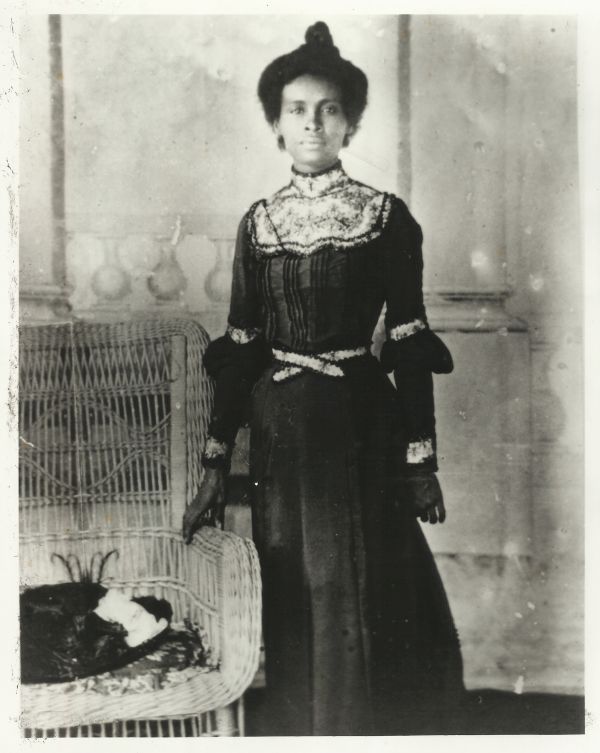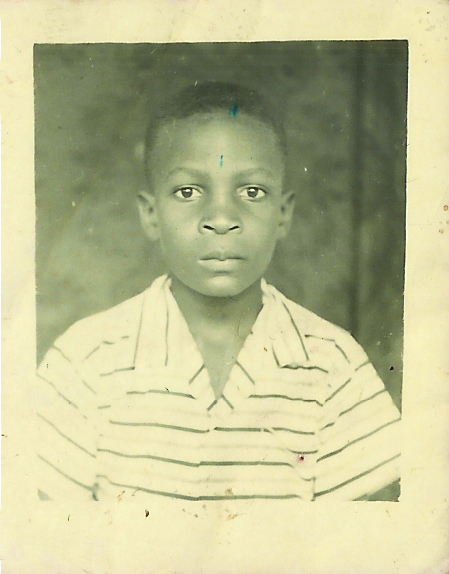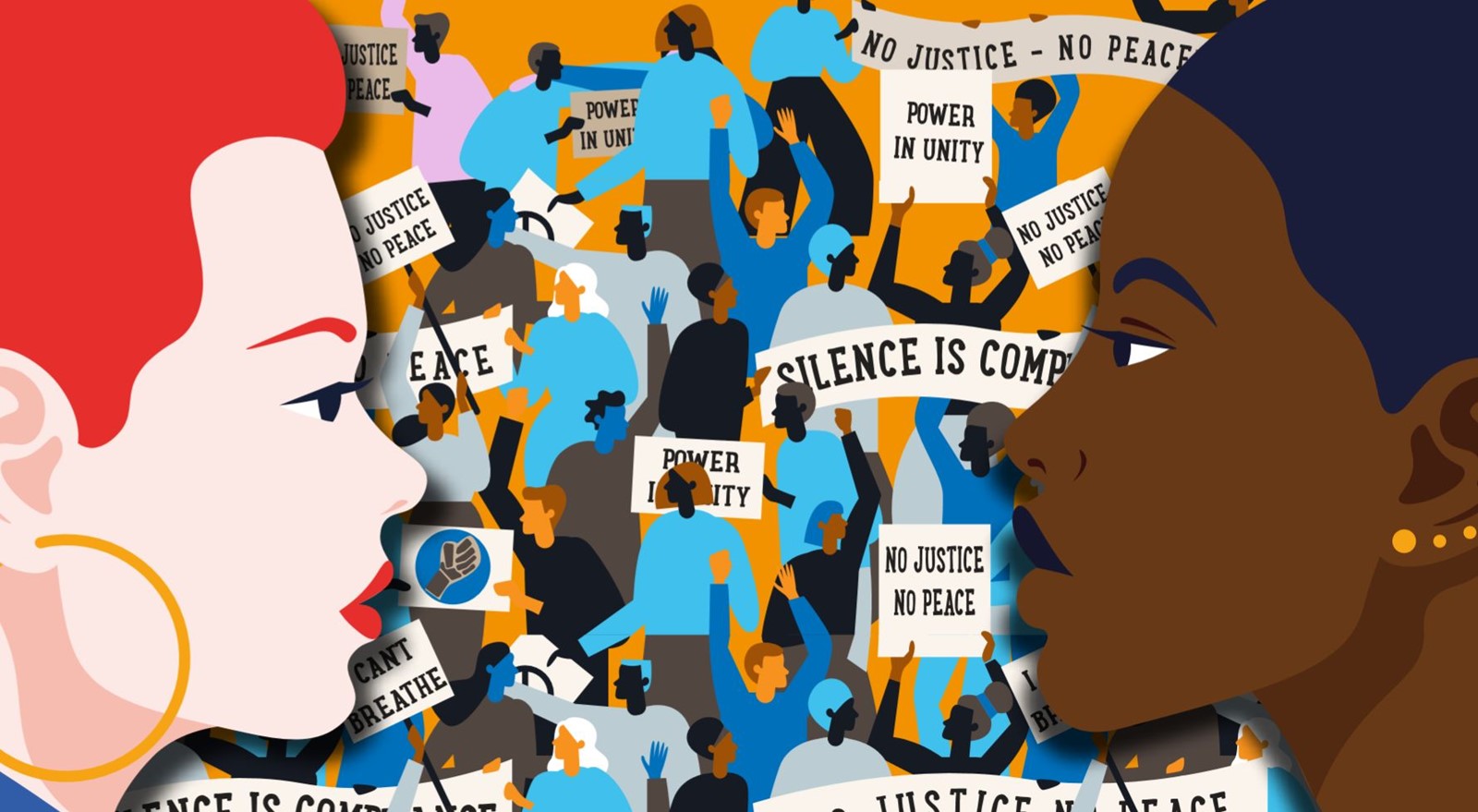When asked to write an account of ‘what’s normal?’ I was a bit confused because I thought that I ought to know. I am, after all, a psychotherapist and a graduate of the social sciences. Then I thought briefly about the lectures I received on psychopathology and ruled it out, realising that I did not see myself as particularly on the right side of normal. As a child immigrant in the UK, normal was the last thing I ever felt, and because of that, I decided that I would write a biographical account of how I was tyrannised by the word ‘normal’ on many fronts during my development, with influences from my family as well as external ones.
An old sepia photograph of Paulina David Pierre, my maternal great-grandmother, slipped out of a book by chance when I was clearing out my grandmother’s things 20 or so years ago. She looks ‘normal’, but is well-to-do, black, a Jew and a suffragette. There was no pride in my grandmother’s voice when she told me about her firebrand mother who campaigned in the market square. These many differences were not at all normal in an early 20th century British Caribbean colony, where more than 90% of the population were Roman Catholic, due to the previous French occupation.
Paulina married Shepherd Pierre when she was almost 30 – a man who was not of her class or educational level. My great-grandfather, Shepherd Pierre, was a socialist and a follower of Marcus Garvey. It was while he was working on the Panama Canal that Shepherd learnt about Marcus Garvey. Garvey was helping the workers form a union. The majority of people who worked on the canal were from the Caribbean and a quarter of them would never return home, falling victim to serious injury, tropical disease or death. To celebrate his return alive, Garvey bought himself a Ford Model T motor car, at a time when cars were few and far between on the island of Grenada and certainly not driven by black men.
Born of parents who were born into slavery, Shepherd’s younger brother was emotionally damaged in France during World War I, as a stretcher bearer in the Caribbean Regiment. As a law student in London, he answered Kitchener’s call to arms and later realised that the British army did not like the idea of black men with guns, even though there were also African and Indian regiments fighting for king and country. Shepherd Pierre was no fan of British imperialism and he passed these sentiments on to his grandchildren.
Off-centre
We, the Thomas family, did not stand out as different in Grenada. We looked like everybody else, but were a bit modern perhaps. Few women drove cars or smoked cigarettes then, as the women in our family did. Members of my family have been off-centre and not normal for a long time and they appear to revel in it. Our gardener was a friend my father made at agricultural college when they were 16. Miss Amelia, who looked after our gardens, was in a same-sex relationship with Miss Irene and they were raising children together.


This did not seem unusual to six-year-old me because no one around me talked about it or ventured an opinion. Now, I imagine that if they did, they would have had my father to deal with. As a man with some influence it would have been wise not to cross him. Amelia dressed in what were men’s clothes in the garden, but when we all went to a political rally, she would surprise us with high heels and a dress. I did not learn the word ‘lesbian’ until I was 14.
Arriving in the UK from Grenada, aged seven, I was definitely seen as ‘not normal’. I was constantly asked if I lived in trees in my country. In the playground, I was asked if I had a tail like a monkey and I realised that there was something distinctly odd about the uneducated English. Then I saw Tarzan on the television, and I understood I was not seen as quite human but three-fifths human, the way that enslaved Africans were seen.
I realised quite early that I could not entrust white adults and teachers with the wisdom I expected from most adults, because so few of them knew about the colonies that we came from. At that time, teachers were not aware of the dual world in which the black and the Asian child lived and how it felt for them discovering the unfairness of racism for the first time – like the eight-year-old child told that his essay was too well written, and that he could not possibly have done the work himself, having just arrived in the country.
Being raised surrounded by opinions about colonial politics in Africa, India and the Caribbean, I would inevitably develop left-wing political views. I was learning about the American colour bar, the Bristol Bus Company boycott and the imprisoned black lawyer called Mandela in South Africa who wanted the right to vote in his own country, like my great-grandmother. I heard characters on UK television talking about the ‘sex war’ and debates in school titled ‘A Woman’s Place is in the Home’, which in part trivialised and titillated the issue of gender relations and bore no relation to what happened in my home. I was told by a high-school friend of a similar political persuasion that I should not let people know that my parents had communist leanings because nobody would talk to me.
Colour and vibrancy
As well as the odd soul star poster that hung on my bedroom walls, I had Soviet propaganda art. I enjoyed the colour and vibrancy. I realised that, having my background, I was not normal, and it was clear to me that normal was not a good thing to be. I also learnt that people needed to hold on to their own ideas of normality to guide their psychological parameters and security and that going against the tide was never going to be easy. I concluded that ‘whiteness’ had for a long time colonised the space that normal should occupy.
The other discussion at school was about mixed marriages and that children of these unions were doomed to a life of unhappiness. I found this strange because the Caribbean was a melting pot of mixed unions and they were not doomed to unhappiness. In our house, the ‘mixed’ bit of Chief Seretse Khama’s marriage was that he had married a commoner. The Botswana nobleman and his English bride were vilified in the press and hounded by governments in the UK and southern Africa. In time, he and his wife were received by the British Queen and became the new normal.
Being raised as a black child during a time of social change and the civil rights and women’s movements, it is not surprising that my values and attitudes were shaped by these. My choice of profession as a social worker, attending to many marginalised people, and my practice as a psychotherapist would be informed by this. Not being normal has enabled me to not always follow the crowd. In my first holiday job, in a factory, aged 17, I met John, also called Joan, attired in suit and tie. He was a woman who had cross-dressed for 20 years. Then I remembered Miss Amelia from Grenada, who also varied her dress, and John and I got on well – as he did with others in the factory.
During my five-year psychotherapy training, I was very fortunate to meet Jafar Kareem in 1980. He felt that ‘normal’ was a cruel and unforgiving word. Kareem founded Nafsiyat, a psychotherapy centre in London, which helped black and minority ethnic people to exist and be normal within the psychotherapy agenda. Nafsiyat began as a campaign organisation as well as a therapeutic service. Before Nafsiyat, black people were considered not sufficiently verbal or conceptually capable of using a talking therapy. After the Department of Health funded some research, we published our findings in 1992, with further publications in 2000 and 2019.1,2
Now in adulthood, I am so pleased that my family were not constricted by concepts of normality. Had they done so I would have had difficulties as a black boy in a majority white society. Dietrich Bonhoeffer is a hero of mine because he chose not to be normal. Born into a patrician German family and trained as a protestant clergyman, he chose not to close his eyes to injustice under the Nazi administration. He helped the persecuted to escape, giving his life to that service and to his belief. What is brave is being part of the majority and standing out, not being normal.
Next in this issue
References
1. Kareem J, Littlewood R (eds). Intercultural therapy: themes, interpretations and practice. Oxford: Blackwell Science; 1992.
2. Ababio B, Littlewood R (eds). Intercultural therapy: challenges, insights and developments. Abingdon: Routledge; 2019.
